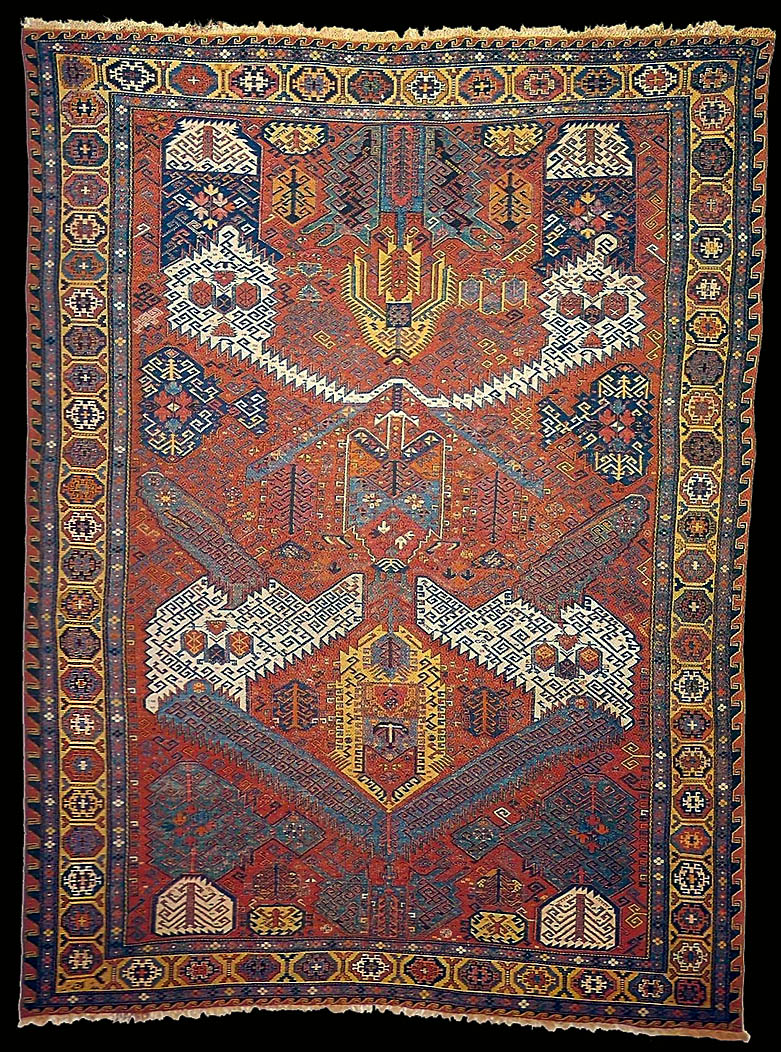|
78. SOUMAK
mid-19th century, 10'8" X 7'9" [m. 3-30 x 2.40]
Warp; wool
Weft: wool, one shoot after each row of knots
Knotting: Soumak, flat weave, wool
This rug is a Rolls-Royce among Soumaks. The design is one of a kind and as
elliptical as it is beautiful. Loosely speaking, the diagonal construction
and all-over quality of the design indicate that it is a dragon rug. The
field, rather than being filled with dragons, is decorated by stylized
flowers, Chinese-derived latticework, and endless knots, hooks, arrows,
trees, and a few vestigial peacock tails. When one takes a good look, it
becomes evident that the rug is not woven in an all-over patternójust when
the diagonal bands should repeat themselves, they stop. The field is brick
red, the designs primarily blue, white, and yellow.
The octagons characteristic of Soumaks are seen in the wide border. The
design in the middle of the rug could be seen as a family shield. The tiny
S's in the field are a stylization of the Chinese cloudband, and indeed
certain parts are very like the cloudband motif. The central yellow borders
make a good contrast to the terra cotta of the field. When one compares it
with the one in Plate 77, it is easy to see the individuality and
imagination that make this rug so distinctive.
published at Luciano Coen & Louise Duncan's The Oriental Rug
Lit: Luciano Coen & Louise Duncan's The Oriental Rug, plate 78
 |
